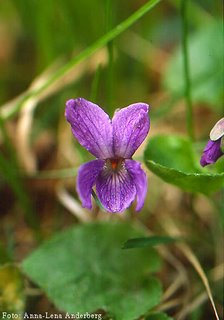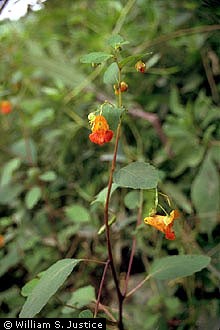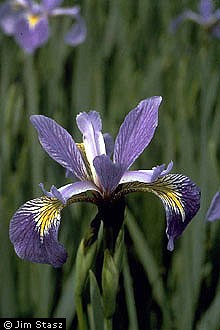Elderberry

Start taking the syrup when you feel a virus coming on, or even if it seems to have set in already. It will shorten the virus' duration or keep it from taking hold altogether. It will also just plain make you feel nice, which is something you need when you are sick. You can take a spoonful or two of straight syrup throughout the day, especially nice on a sore throat, or add a few teaspoons to a cup of warm water to sip until it's gone and you make another cup.
When gathering elderberries to make the syrup, look for any dark blue, purple, or black berries. Don't worry too much about species, the scientific name for elderberries is actually experiencing a bit of a shift right now anyway. The species in my area was just changed from Sambucus canadensis to the current name I have listed above. I like to keep on top of these things because of my background in botany, but I can't imagine the plants care a bit! Just stay away from red berried elders. Some people will tell you that they are poisonous, I think that they are probably as safe as anything as long as you cook them and have been known to make a fantastic red elder mead myself, but they don't necessarily have the antiviral impact that the blue/purple/black species do. Make sure that you have stripped all of the stems - even the tiny ones, off of the berries before you use them. Stems add an icky flavor to the syrup as well as, potentially, toxins that could give you an intense tummy ache. If you have never used elderberries before, don't be discouraged by their flavor raw (though don't eat a bunch of the raw berries either - they can also contain tummy aching toxins) their yumminess increases 100 fold when cooked, as in the syrup, or dried. If you do not have time to make syrup when you are collecting berries, they freeze really well, just don't wait until you are sick because you won't feel like making syrup then. If you find you are sick with lots of berries and no syrup, it's time to make juice (see below), which is also tasty and effective.
Start with as many berries as you have and add just enough water to keep them from sticking to the pan before their juices start to flow (maybe 1.5 cups water/qt berries, it will depend on the pan really) then cover and cook over low/medium heat until they have all burst and lost their fresh color. While cooking add 2 cloves, 1-2 small pieces (about 1/2 to 3/4 an inch of root all together) sweet flag, and about 1/6 of a whole nutmeg (cracked off the nut, not grated) per quart of berries. Then squeeze everything through a jelly bag (squeeze instead of just straining so you end up with thick juice). After squeezing, while the juice is still warm, add an equal amount of raw honey. I always try to use the darkest local honey available. Don't heat it any more after you add the honey to preserve enzymes and floral delicacies. If you prefer, you could add much less honey (a lot of recipes call for more like 4:1 juice:honey ratio) but it just doesn't seem like syrup to me that way and I really really like honey. The honey helps it keep longer too.
I have also made an elderberry juice that I add a bit of honey to when I (or my husband) am (is) feeling yucky. It works just as well for those times that you have berries but no syrup and it tastes a bit fruitier, which is nice sometimes. Simply add a few tablespoons of frozen berries, directly from the freezer, to a pint of water. Heat this until the water has taken on a lot of color from the berries and tastes fruity, strain, and add honey to taste. I have never actually simmered this preparation and I've never had any tummy ache issues such as those mentioned above because of it. If you are sick, it is best to get a loved one to make this juice for you rather than doing it yourself. I am sure that it increases the healing properties.


 Melilotus officinalis
Melilotus officinalis